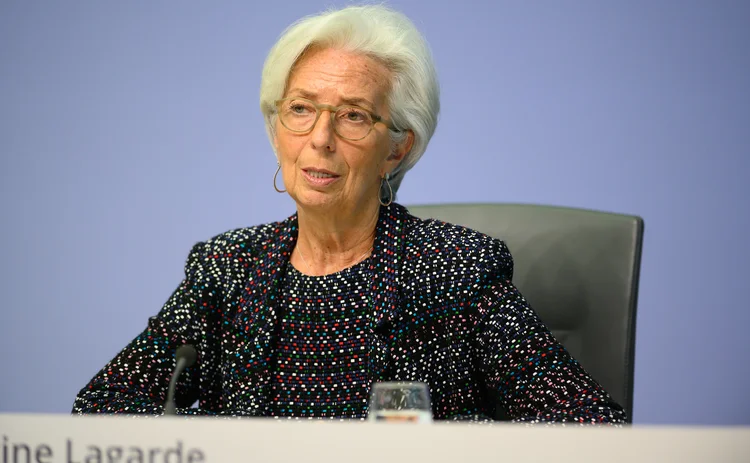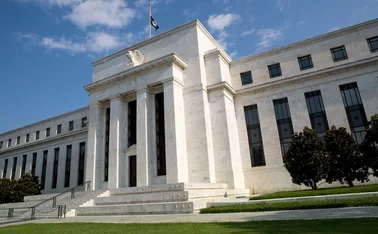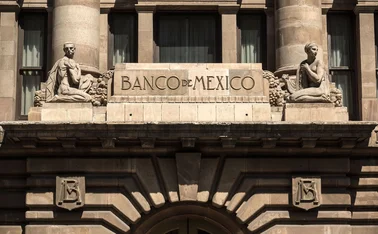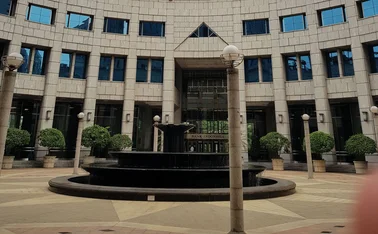
ECB expected to pause amid uncertain impact of war
Governing council could discuss QE backstop to prevent wider sovereign bond spreads

The European Central Bank is not expected to announce major policy changes in its policy meeting on April 14, despite record-high inflation, say analysts.
In March, headline inflation increased year on year by 7.5%, which is already much higher than the ECB’s March forecast, which predicted 5.1% inflation for 2022. Nonetheless, this week, the institution will not update its macroeconomic projections.
In this uncertain environment, observers point out the governing council lacks data to judge the impact the Russian invasion of Ukraine is having on the eurozone economy. As a result, most agree the central bank will maintain a wait-and-see approach until its June meeting.
This “is not a meeting for actual policy action”, says Carsten Brzeski, global head of macro at Dutch bank ING. “There simply is too little hard data on the macro-economic implications of the war in Ukraine yet. Staying put and continuing with the announced reduction of net asset purchases looks like the only viable option for now.”
In March, the governing council decided to accelerate the reduction of net asset purchases. They are now scheduled to continue until the end of June, at which point the ECB will assess whether inflation data requires it to completely halt bond-buying or to prolong it a few months more.
“We don’t expect the ECB to significantly change its policy settings at this juncture,” says Elwin de Groot, head of macro strategy at Dutch lender Rabobank. “The biggest hawkish risk we see for the April meeting is the possibility that [ECB president Christine] Lagarde puts more emphasis on the intention to end purchases after Q2.”
Some observers point out Lagarde has surprised markets in the past, conveying apparently contradictory statements in the press conference following monetary policy meetings.
“The risk of incremental hawkish shifts in communication remains,” says Frederik Ducrozet, strategist at asset manager Pictet Wealth Management. He thinks Lagarde could signal “a conditional end of APP [asset purchase programme] purchases in June, opening up the possibility of a first rate hike in September”.
However, Ducrozet argues the president should stick to the current forward guidance and stress that a rate hike will take place “some time” after the end of the APP. The ECB “should leave enough ambiguity about the timing of lift-off anyway,” he argues.
Different type of shock
This inaction in the face of inflation readings almost four times higher than the 2% target partly stems from differences in the forces pushing prices higher in the eurozone.
US headline consumer price index inflation rose year on year by 8.5% in March, and core inflation rose by as much as 6.5%. But in the eurozone, the headline reading rose by 7.5% during the same period, with core inflation remaining at just 3%.
Energy prices accounted for the lion’s share of headline inflation, increasing by 44.7% in the eurozone. In contrast, non-energy industrial good prices increased by 3.4% and services by 2.7%
Although ING’s Brzeski no longer rules out double-digit monthly inflation rates over the coming months, he points out eurozone inflation “is to a large extent still mainly driven by energy and commodity prices and could therefore still be labelled as transitory or temporary”. Yet he acknowledges “this period of transition takes extremely long and will very likely lead to permanently high price levels”.
In this environment, Brzeski’s base scenario has the ECB ending net asset purchases in the second quarter of 2022, and hiking interest rates by 25 basis points in quarter four and another 25bp in the first quarter of 2023.
Anti-fragmentation tool
As plans for policy normalisation proceed, there is increasing speculation as to whether and how the ECB will continue intervening in sovereign debt markets to prevent a sharp widening in the spreads between Germany’s debt and those of countries such as Italy or Spain.
In this sense, Lagarde hinted in a speech on March 17 the ECB would be willing to provide support. “This means that we are ready to use a wide range of instruments to address fragmentation, including the reinvestment of our portfolio held under the pandemic emergency purchase programme,” she said. “If necessary, we can design and deploy new instruments to secure monetary policy transmission as we move along the path of policy normalisation, as we have shown on many occasions in the past.”
Paul Hollingsworth, chief European economist with bank BNP Paribas, identifies three reasons the governing council may need to accelerate the design of a quantitative easing backstop.
“First, the potential for needing a faster policy-tightening campaign once rate rises get underway,” says Hollingsworth. “Indeed we have continued to stress upside risks to our medium-term outlook for rate increases, to the extent that the ECB, like the Fed, is a long way from ‘neutral’.”
The second factor is that governing council members may be worried about the knock-on effects on European markets coming from the much faster policy tightening the Fed is communicating in the US, which will include quantitative tightening.
Finally, “a potential [Marine] Le Pen victory in the French presidential election, not our base case, would likely widen spreads and cause concerns about the homogeneity of the monetary policy transmission mechanism,” adds Hollingsworth.
Ducrozet argues the governing council should not provide many details on this backstop. Any governing council commitment to a specific amount of purchases or spread level may prompt markets to immediately test their commitment.
“Even if the ECB did agree on such backstop facility, this time would be very different than during previous episodes of financial fragmentation,” points out the Pictet strategist. “Redenomination risks have all but disappeared, inflation is at record highs, and core bonds yields are rising.”
In his view, the ECB’s goal would be to act pre-emptively to prevent spreads from widening before it starts increasing rates. In the current inflationary environment, he thinks “justification for another QE programme will be much more difficult to articulate”.
Yet, Hollingsworth suggests the tool is an option that could bridge the differences between governing council members.
“The interests of both hawks and doves converge on the backstop, as the former will want to ensure they can rely on the tightening campaign to prevent too high inflation without being deterred by spreads,” he says. “The chances of a backstop-like operation being implemented are clearly growing and this suggests spread widening won’t deter the ECB from progressing on its path of policy normalisation.”
Only users who have a paid subscription or are part of a corporate subscription are able to print or copy content.
To access these options, along with all other subscription benefits, please contact info@centralbanking.com or view our subscription options here: http://subscriptions.centralbanking.com/subscribe
You are currently unable to print this content. Please contact info@centralbanking.com to find out more.
You are currently unable to copy this content. Please contact info@centralbanking.com to find out more.
Copyright Infopro Digital Limited. All rights reserved.
As outlined in our terms and conditions, https://www.infopro-digital.com/terms-and-conditions/subscriptions/ (point 2.4), printing is limited to a single copy.
If you would like to purchase additional rights please email info@centralbanking.com
Copyright Infopro Digital Limited. All rights reserved.
You may share this content using our article tools. As outlined in our terms and conditions, https://www.infopro-digital.com/terms-and-conditions/subscriptions/ (clause 2.4), an Authorised User may only make one copy of the materials for their own personal use. You must also comply with the restrictions in clause 2.5.
If you would like to purchase additional rights please email info@centralbanking.com








